- Home
- Robert Graysmith
Black Fire: The True Story of the Original Tom Sawyer Page 12
Black Fire: The True Story of the Original Tom Sawyer Read online
Page 12
Though Yankee pretended to be thickheaded, he had invented and perfected probably the most valuable creation in Gold Rush–era San Francisco: a rough pine box painted dark blue and measuring two feet by fourteen inches and a foot deep. In the middle was bored an auger hole big enough to receive slips of paper. Round the bottom ran a neatly fitted molding with two inner slides constituting a false bottom. A false side neatly fitted into a groove inside the real side and bottom. When closed, both inside and outside possessed the appearance of a plain box. But Yankee had engineered the key lock to the box to be sprung by a peculiar pressure on one side of the lid. This allowed him as election judge to insert a bundle of tickets bearing his candidate’s name by drawing out the slide and filling the space between the true bottom and false one. The side space could be likewise stuffed. After Yankee shoved the slides back into place, he locked the box and gave the key to the inspector, who sealed the top aperture with wax. One Election Day morning, the agent of one of the candidates offered Yankee $500 to bring a majority for his man, the money to be paid after the election. Yankee declared himself incorruptible and tore up the phony returns. Another agent offered him $300 in cash to put his friend in, but he had once treated Yankee badly. “You shall not have the office at any price,” Yankee said and instead sold the office to a man he liked for $100. He had his scruples.
In the East, officials and law enforcement authorities engaged in political favoritism to an even greater degree. As the street gangs who ran as protective escorts for New York City fire companies gained in prestige, their battles escalated from control of a neighborhood to riots at fire scenes and arson and murder. One Philadelphia gang, the Rats, took over the Southwark neighborhood after attaching itself to the Weccacoe Engine Company. Another gang, the Killers, infiltrated the Moyamensing Hose Company and became the most feared group in Philadelphia. They attacked the Shiffler Hose Company, captured their pumper, and dragged it to Moyamensing, where they hacked it to bits and handed the pieces to a crowd. They torched a hotel and tavern owned by a black family and then fought off the fire companies that attempted to put out the blaze.
In San Francisco, William Howard had arranged for his fellow merchants to pay cash tributes to his favorite firehouse, but some volunteers went further. For a small consideration a storeowner could be certain of his store’s not burning to the ground. Compared to the endless ranks of truly crooked men, a slightly dishonest man like Broderick, who was honest in his personal dealings, might be the most honest man in town. “Broderick was no hypocrite in this,” one volunteer said, “but actually quite outspoken. He would have preferred to have the support of the honest element in town, but respectable citizens held back from voting out of fear.” Broderick fought fire with fire. Because honest citizens would not stand up to the criminal element’s shoulder strikers, he sent his own bullies against them in their stead. “I say this with pain,” Broderick admitted. “I have not had the admiration from men of the class from which I sprang that might be expected. They submit too lamely to oppression and are too prone to neglect their rights and duties as citizens.” Thus, he worked with men who would obediently carry out his orders and countenanced the most flagrant licentiousness among them, though he personally was devoid of greed and lived a highly moral personal life.
As Cushing watched the jabbing, punching boxer continue up Montgomery Street, he felt he was watching a brilliant actor. Yankee Sullivan drank from seventy to eighty shots of whiskey a day and gathered information as Broderick’s secret agent. Shadowboxing from one dive to another, he ended up at one in Sydney Town. Slumping over the counter, he drank and cocked one cauliflower ear, trying to discover if the incendiary was one of a fierce band of hundreds of Australian ex-convicts. The times—hard, ugly, unwashed, and vulgar—were lawless, and the most lawless lived in at the base of Loma Alta and along upper Pacific Street. It was a sordid region of waterfront saloons and boardinghouses filled with gamblers and thieves. Veined with innumerable paths, such as Moketown and Dead Man’s Alley, it loomed in the center of the rectangle created by Broadway, Washington, Montgomery, and Stockton streets. Because Kearny Street and Dupont Avenue led into this “carnival of crime,” a local travel guide mapped the precise locality so that their readers might keep away: “Give it a wide berth as you value your life!” Within a decade it would be known better as the Barbary Coast.
“All petty corruption in San Francisco pales before the society-cankering rapacity of the Sydney,” the Alta said. The Ducks’ own country, a land colonized initially by expelled British convicts, had deported them. These former prisoners and ticket-of-leave men of New South Wales and Van Diemen’s Land penal colonies had been released on one condition: They must never again set foot in a British dominion. They entered their kingdom at the foot of the northeast corner of Davis and Pacific, the first street cut through the sand hills behind the cove. They moored their skiffs, unloaded, and reached the Pacific Street landing by climbing a set of slimy stone steps fronting a rude bulkhead. They armed themselves with pistols, stilettos, and bowie knives and robbed everyone who dared pass through their kingdom. Secure in their numbers, the Ducks committed their most revolting crimes in bright daylight under the eyes of the authorities. At night these sneak thieves, footpads, arsonists, and swindlers plundered houses, met the slightest resistance with murder, and used flames to hide their crimes. The Board of Selectmen regularly looted the treasury to pay them protection money.
Broderick, who was not above recruiting men from Sydney Town to accomplish his aims, suspected a Duck had set the two city-destroying fires. Suspiciously, the two blazes had broken out when the Lightkeeper’s Wind was blowing away from Sydney Town. “Whoever this firebug is,” he said, “he is extraordinarily well versed in the operations of the fire departments outside Sydney Town.” The Ducks frequented the Tam O’Shanter, the Magpie, the Noggin of Ale, the Hilo Johnny, the Jolly Waterman, the Bird in Hand, and “Hell” Haggerty’s Goat and Compass groggery at the base of Telegraph Hill. At one of these bars, Yankee Sullivan heard some riveting intelligence. The Lightkeeper had already planned the next big fire.
On May 30, 1850, the Council voted to pay the mayor and city recorder salaries of $10,000 each and increase the pay of its aldermen to $6,000, but it had no money for a paid fire department. Livid, Edward Gilbert, editor of the Alta newspaper, rallied the populace to protest this inequity. That night citizens held gatherings and speeches in the square and decided in a week or two to form a huge parade and march upon the council to expel them physically if something wasn’t done before then. No one knew, of course, that before the parade could start the Lightkeeper would strike again with a third and greater city-decimating conflagration.
Rainbow Rivers of Gold and Silver
By 8:00 A.M. on mail day, June 14, 1850, the one-year anniversary of the Philadelphia dockside arson, San Francisco was already doomed. Under unusually strong trade winds, the California steamed through the Golden Gate carrying 114 bags of mail. Even though Captain George Coffin, a Sacramento and San Joaquin rivers trader, got to the post office at the corner of Washington and Stockton streets by seven-thirty, a half hour early, two long lines were already stretched around the building. Just before the clerk slid back the post office window to begin the day, he glanced downhill and observed smoke behind the Merchant’s Hotel at Clay and Kearny, the outer edge of Syndey Town. In the Square smoke was boiling out the doors of the Sacramento House’s bakery. Like so many great disasters the worst blaze so far began with a tiny malfunction. Someone had stuffed a rag inside the flue of the bakery’s chimney. Coffin heard the alarm bell of the Montgomery Engine House up the hill ring out its “frightful ding-dong-clang.” In the Square, the new Monumental bell clanged, a noisy, insistent toll. Other bells pealed, other gongs rang. The alarm drew hundreds, then thousands. The Square became a dense mass of human beings who, in spite of new laws, had come only to watch.
On Telegraph Hill, Richard Lunt Hale, a young, dark-bearded New England pr
ospector, was standing outside his shanty when he saw a puff of smoke between the hill and shore from the direction of the bay. “I did not pay much attention to it at first,” he said, “but even as I looked the smoke grew in volume, but without warning, tongues of flame shot out in several directions.” A raging, rolling whirlwind of fire was tearing through the tent city, gathering impetus from the strong wind. As the bells rang, men rushed down the hillside to join the excited crowd. Captain Palmer B. Hewlett, known as Don Pedro, lived in a house higher up toward the telegraph station. He saw a high cloud of smoke near Kearny Street beyond the Square, returned to the breakfast table, and cautioned his visitors. “You’d better start looking after your baggage if it’s in the city.”
“Oh, Don Pedro, it cannot reach the place where our trunks are—Riddle’s store on Sacramento Street,” his visitors said placidly.
“If you don’t hurry, the fire will be there before you are,” Don Pedro said.
To please their host, all three guests walked down to the edge of a little ravine. Just then someone crying “Fire!” raced down the steep hill. The trio quickened their pace. Before they passed Pacific Street, flames were rushing everywhere. They sprinted the rest of the way to Riddle and Eaton’s and, climbing to the second floor, got their trunks. Before they reached the ground floor again, Riddle’s roof was afire.
“Everybody out! Fire!” cried Joseph C. Palmer, a close but corrupt political ally of Broderick. He was a banker and a foreman of the stylish St. Francis Hook and Ladder, a mostly German company. “Start her lively, boys,” Palmer cried and lifted his trumpet. His blaring notes rose above the crowd, but the fire spoke louder. The firemen with their enormous “teapots” were better prepared, but this time the roads failed. The St. Francis Hook and Ladder’s engine, with just a short distance to travel from their three-story brick building on the west side of Dupont Street near Sacramento Street, thundered downhill to the Square, but before reaching Commercial Alley it became ensnared in mud. The volunteers pulled on their tow ropes but could not budge it. Dutch Charley Duane, their newly elected assistant foreman, could not free the engine either, in spite of his prodigious strength. The black creep of flame, unhampered, consumed whatever it desired between Clay, California, and Kearny streets. Finally, Broderick One stayed it from crossing Kearny and going uptown by exploding an immense old adobe on the corner of Clay and Kearny. An artesian well on the corner of Clay and Montgomery streets furnished enough water to save the valuable block near it and part of other blocks. The well’s cost was a mere $140. The new Council, in power for more than six weeks, had provided for only one of the promised wells, though their increased salary was already in effect.
“The flames were utterly beyond control,” said Hale, who had come down to help fight the fire. “The dry cloth of the tents, the flimsy wooden shacks caught and burned like tinder, while the strong wind lashed the flames before it until there was nothing more for it to gorge its all consuming appetite upon.” South of the city, miners and farmers in the hills observed an odd light tinting the underbelly of clouds over San Francisco—the reflection of the fire moving toward the prized new piers. As the flames pushed toward them, they touched the foot of Commercial Street where the considerable premises of the three most important mercantile houses in San Francisco—Simmons, Hutchinson & Company, S. H. Williams & Company, and Macondray & Company—sat east of Clay Street fronting the bay. Their stored merchandise was immensely valuable. The volunteers raced to save them. Three giant pyramids of lumber, a million board feet of planks piled up in their yards, dwarfed the firefighters battling in the baking mud. “The scene was sublime when these pyramids, like those in Egypt, got well on fire,” Captain Coffin recorded in his journal. The lumber ignited explosively. Boards sizzled and smoked. Slivers sang and snapped. Knotholes filled with moisture cracked like all the firecrackers in China exploding at once. The pyramids of lumber stacked at the foot of Commercial Street burned brighter.
Retorts of powder exploding in other blocks followed every minute like gunshots, but no amount of black powder could save the wood warehouses between Montgomery Street and the water. Over at City Hall, a company of marines forced spectators back as soldiers marched chests of gold dust to a secure area. As they rolled closer to the docks, a team of Ducks blocked their way. The men of a U.S. warship whipped a path for the soldiers with the broad side of their swords and enabled them to reach the shoreline. As if magnetically drawn, the blaze leaped for the new waterfront and anchored ships. How many besotted sailors would go up in flames on their straw-filled, gin-soaked mattresses? At the mudflat, the soldiers dropped the chests into the muck and jumped on top to force them under. Bluejackets shoveled mud over them, then ran from the advancing flames. An advancing wall of flames herded five hundred pitiful citizens out onto Long Wharf. Sobbing, they watched flames crawl relentlessly toward them. The refugees, Coffin among them, were driven into the heart of the Ghost Fleet. The cool metropolis of deserted ships offered temporary refuge, but now the castaways were cut off from all communication with the city. With a sudden shift in the wind, the dancing cinders and black smoke suddenly doubled back shoreward to where the fire had begun, the Merchant’s Hotel. The door of the furnace had reopened. Unbelievably, the blaze began to reignite the already burned areas. As the fire burned up the available oxygen, its color altered from yellow to red. Momentarily spared, the castaways on Long Wharf listened to screams from the burning shore. The fire on shore persisted most of the day.
Night fell. Flames colored the sky with a copper glow. Outlanders saw a shroud of ashes forming over the docks. Small craft caught fire. Larger vessels began to smolder. As if from a pepper mill the cloud of gray ash settled out over the Ghost Fleet. Black unburned smoke boiled upward until it reached fresh oxygen, then exploded in flames on top of the dense shroud of smoke and lit the sky again. Now one end of San Francisco rose from fire, the other from water. DeWitt & Harrison’s storehouse, midblock on the north side of Pacific Street, was threatened. Kohler recalled that about a dozen years earlier, when the Bowery Theater caught fire, Old Matt Carey of Engine Company Twenty-six had protected the adjacent buildings by hanging wet carpets, mats, and blankets over them. In San Francisco, storefronts along Washington Street had been hung with blankets during the Christmas Eve fire but had not been dampened enough, and those buildings were lost. Kohler had DeWitt & Harrison’s commodities warehouse roof covered with soaked blankets and had wet the walls of buildings in advance of the fire. To attack directly with water would create scalding steam. In the midst of all this fire it was odd to see torch boys, leading volunteers to the fire by torch through the darkened bogs. The Ducks were there ahead of them, hindering rescues so they could loot.
Sawyer, hair singed, arms blistered, and eyes watering, saw two Ducks who had plundered some buildings race to pile their swag in a vacant lot and return again. A stranger stood at the forefront of a crowd, pinhole eyes alight with flame. Sawyer found his eyes focused on him. In spite of the heat, the man was leaning into the blaze smiling and extending his palms as if warming himself. The mob swept by him and he vanished as if he had never existed.
Throughout Friday night, the five hundred refugees on Long Wharf huddled at its far end and gauged the blaze’s progress through the fog. At dawn Saturday, the fire made the water ruddy and tinted the morning fog a salmon color, then red. Finally the red curtain dimmed and sank to a smoldering orange. As the fire subsided and heavy smoke rolled over the refugees, the town on shore and shipping in the cove became indistinguishable from each other. They felt a “fatal euphoria” come over them. The fog burned away late in the morning and the first rays of dull, gray sunlight penetrated the canopy of ashes shrouding the city. The volunteers had saved some of the waterfront, though the low tide had rendered many of their water wagons useless. Abandoned, these pumpers lay as charred rubble on the pier. Dozens of ships crowded at their moorings were damaged, but Captain Coffin’s sloop, Sophronia, was not among them—the firs
t good fortune he had had since a recent unproductive trading expedition to Marysville. Solemnly he and the others left the long pier to inspect the charred sites of former homes and businesses.
At the quartermaster’s, gun barrels had twisted like snakes. Coffin reached the burning pyramids of lumber. “When everything else was swept away, they stood like fiery giants … the genii of the catastrophe,” he recalled, “with innumerable arms and tongues of flame, constantly spitting out flashes and cinders. Everything else was swept away.” A gravelike pall lay over the former downtown. Not a breath of air stirred. Block upon block of glowing embers emitted a suffocating vapor. The city was like a lava flow. Jagged trenches of deep red, bright orange, and yellow glowed under the blackened crust, eerily lighting the landscape. The burned-out business district was low, dark, and red. Coffin weaved among the ruins. Buildings crumbled to dust at the first freshening of the prevailing sea wind. Precious metals accented the blackened landscape. At Coffin’s feet gold and silver had melted into the ground and pooled in glittering rivers. Rainbow lakes of glass, once the windows of happy homes, reflected his face in brilliant colors. As the sun ascended, these mirrors became blinding. Spoons, crockery, forks, and knives had melted together in heaps. Tons of fused black nails littered the dunes in the shape of the kegs that had contained them. Iron warehouses had shrunken into unrecognizable cages. A fireproof safe had burst open and was empty.
Coffin met an acquaintance who had been burned out three times in six months. “Come,” Coffin said, patting him on the back, “no dumps, up and at it again.” “No, I am done for now,” he said. “Between the first two fires I had time to recover myself, but from the third of May to the thirteenth of June is not long enough. Only let me have six months’ interval and I shall be prepared, but forty days is not enough. No, no, the risk is too great! I shall sell my lot and try my fortune in some other place.” To his left, survivors were lunching on roast ham, baked chicken, hot preserves, vegetables, and sardines—all cooked by the fire and blackly burning in drifts.

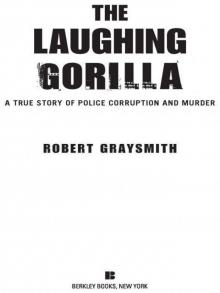 The Laughing Gorilla: A True Story of Police Corruption and Murder
The Laughing Gorilla: A True Story of Police Corruption and Murder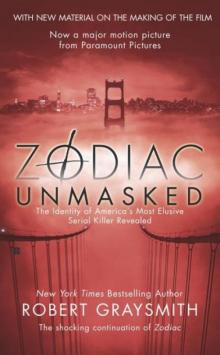 Zodiac Unmasked: The Identity of America's Most Elusive Serial Killer Revealed
Zodiac Unmasked: The Identity of America's Most Elusive Serial Killer Revealed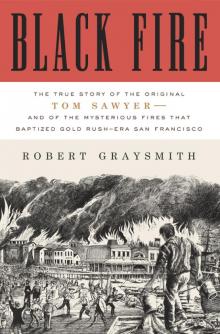 Black Fire: The True Story of the Original Tom Sawyer
Black Fire: The True Story of the Original Tom Sawyer Zodiac Unmasked: The Identity of America's Most Elusive Serial Killers Revealed
Zodiac Unmasked: The Identity of America's Most Elusive Serial Killers Revealed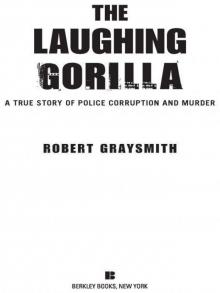 The Laughing Gorilla
The Laughing Gorilla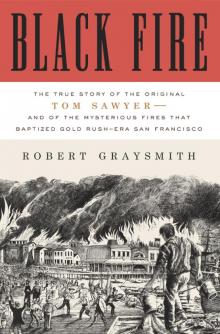 Black Fire
Black Fire